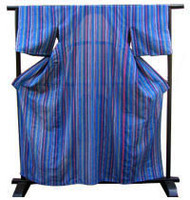

Total:131items
- Pottery & Porcelain (18)
- Lacquerware (4)
- Glasswork (2)
- Wood & Bamboo Work (19)
- Leather Work (1)
- Papermaking (13)
- Textile (20)
- Touzan-Ori: Touzan Weaving
- Sakai Gogatsu Koinobori: Sakai May Carp Streamer
- Nanbu Sakiori
- Nihon Shishu: Japanese Embroidery
- Tsuzurenishiki-Ori: Tsuzurenishiki Weaving
- Ojiya-Tsumugi: Ojiya Pongee
- Ise-Momen: Ise Cotton
- Ojiya-chijimi: Ojiya Crepe
- Yanai-jima: Yanai Stripes
- Kogin-zashi: Kogin embroidery
- Tamba Momen: Tamba Cotton
- Awa Shijira-ori: Awa Shijira Weaving
- Saga Nishiki: Saga Brocade
- Shinshu-Tsumugi: Shinshu-Pongee
- Kyo-nui: Kyoto Embroidery
- Noto Jofu: Noto-jofu hemp fabric
- Matsusaka Momen: Matsusaka Cotton
- Murayama Oshima Tsumugi
- Nibutani-attus
- Oku-Aizu Showa Karamushi Ori: Oku-Aizu Showa Ramie Textiles
- Dyeing products (5)
- Masonry (1)
- Metal Work (11)
- Stationery (4)
- Livingware (3)
- Accessory (4)
- Toys & Entertainment (14)
- Interior (2)
- Other crafts (10)

 |
Main Production Site:Tokushima |
 《Characteristics》
《Characteristics》Awa Shijira-ori is attractive for its unevenness called shibo (凹凸) as it adds particular texture and beauty. Vivid shibo emerges by immersing innovatively woven cloth in boiling water of about 75℃and then drying.
One method to make shibo is to interweave two kinds of warp with different tensility in the same organization so that shrunken warps can create wrinkles and shrinks. Another method is to weave with one kind of warp in a mixed organization and then to immerse in hot water. (A unique striped pattern is produced from alternate weaving of two weft followed by one weft in between the warps. Clothes with this pattern were woven mainly for farmers in the Edo period (17-19c)).
Unevenness (凹凸) of shibo allows for smooth texture and has the merit of being light and cool. It is highly hygroscopic as it is made of cotton and is best clothing to withstand the heat of the summer.
[Traditional Craft Officially Designated by Minister of Economy, Trade and Industry]
Information provided : Awa Shijira-ori Cooperative Society
Translation by: Yoshinori Sakamoto, reviewed by Yoshiko Nagao
| Materials | Cotton, Indigo |
|---|---|
| Crafting Processes | [1]Hanking up
Wind yarn on a reel [2]Dyeing Dye yarn indigo in a hank dyeing only caldron [3]Washing yarn with water Wash dyed yarn in water [4]Drying yarn in the sun Dry in the sun yarn pasted with gloiopeltis glue for the purpose of preventing fluffing [5]Reeling・Warping Prepare the warp by checking the numbers of warps, width, length, and arrangement of colored threads. Then wind the warp around the warping machine. [6]Weaving Weave cloth [7]Drying and finishing Immerse the fabric in boiling water of about 75℃ for a while to remove the gloiopeltis glue and to let it shrink. Characteristic shibo (凹凸) will then appear. |
| History | It was strictly forbidden for the commonalty to use silk cloth in the days when the former feudal domain lord Hachisuka ruled the domain of Awa (West Japan). Therefore, the commonalty added fully worked-out beauty to cotton clothes so that they may look better in cotton fabrics.
It is said that a weaver living in Atake village in Awa named Kaifu Hana designed Awa Shijira-ori during the Meiji Restoration inspired by an accidental discovery. One day striped clothes became wet with sudden rain. She dried the clothes under the strong summer sunlight. When she had taken in the dried clothes in the evening she had noticed that parts of the surface had shrunken. Never seen shibo (凹凸) had appeared. Unevenness had appeared at the part where Hana wove the clothe miscounting the number of warps. This phenomenon gave her a hint and through continuous process of trial and error she had succeeded in creating a new cotton crepe pattern. Previously "Shijira-ori" was called "Tatae-ori." Keeping the warp non-intersecting is called "Tatae" in the Tokushima dialect. That's why the name "Tatae-ori" came into existence. |
| Related URL | http://www.awa-shijira.com |
◆Exhibition / Showcase
Nagao Orifu General Partnership Company
Opening hours: 9:00am-16:00pm
Closed: Saturday and Sunday (Store open on Saturday)
189 Wada, Kokufu, Tokushima city, Tokushima prefecture, 779-3121
Tel: +81-(0)88-642-1228
Fax: +81-(0)88-642-1229
(Japanese only)
* You can visit our company and experience weaving. (reservation required) More details can be found here.
Assistance needed? For inquiries in English:
JTCO Contact Form
Your inquiries will be forwarded by JTCO in Japanese to the organization you wish to contact.



